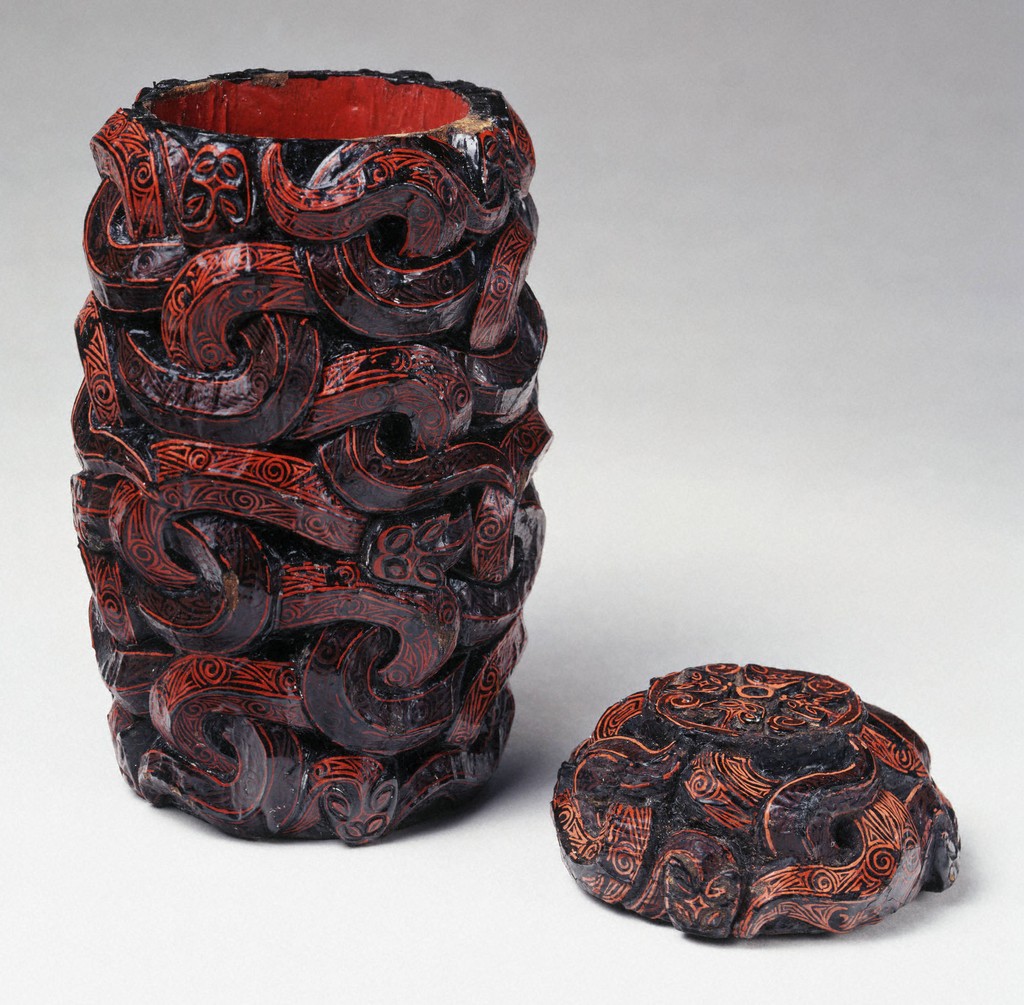China’s Objects: Opulence and Innovation
 Enrolling in a freshman seminar is not a requirement for first-year undergraduate students, but many take advantage of this truly meaningful learning opportunity that comes early in their college experience. Focusing on narrow topics, these classes are offered by instructors in nearly every discipline and allow small groups of students to work closely with their professor and fellow students. In the spring semester of 2022, one of the freshman seminars offered was “China’s Objects: Opulence and Innovation,” which I taught, making use of the Museum’s collections.
Enrolling in a freshman seminar is not a requirement for first-year undergraduate students, but many take advantage of this truly meaningful learning opportunity that comes early in their college experience. Focusing on narrow topics, these classes are offered by instructors in nearly every discipline and allow small groups of students to work closely with their professor and fellow students. In the spring semester of 2022, one of the freshman seminars offered was “China’s Objects: Opulence and Innovation,” which I taught, making use of the Museum’s collections.
Over the course of the semester we charted our way through China’s rich history of objects—bronzes, ceramics, textiles, jades, metalware, lacquer, and more—gaining insight into how materials from the natural world in China were sought out and manipulated to create opulent objects made with innovative technologies. These objects not only encapsulated core cultural beliefs but also satisfied the aesthetic ambitions of artists and patrons. Each week we anchored our discussions by studying two or three objects in the Museum’s collections.
 The course was arranged chronologically, from the Neolithic to the modern period. Each historical epoch was discussed in relation to the material used to make the era or dynasty’s most prized objects. When we reached the fifth century BC, we turned our attention to lacquerware, discussing how lacquer gradually came to overtake bronze, which had held sway for more than a millennium, as the most prestigious material for the creation of the finest objects. We considered a vessel in the Museum’s collection that carries a black, brown, and red lacquered decoration of low-relief intertwined snakes. Each student was asked to find a comparable object in another museum’s collection or at an auction house. In class we discussed the Princeton lacquered vessel in relation to the comparisons. Focusing on a Princeton object and discussing the student-found comparable objects was repeated weekly. This allowed the students to become active investigators and to contribute meaningfully to an organic, though grounded—from the class readings and lectures—discussion about the object and related objects, their mediums, and their historical place.
The course was arranged chronologically, from the Neolithic to the modern period. Each historical epoch was discussed in relation to the material used to make the era or dynasty’s most prized objects. When we reached the fifth century BC, we turned our attention to lacquerware, discussing how lacquer gradually came to overtake bronze, which had held sway for more than a millennium, as the most prestigious material for the creation of the finest objects. We considered a vessel in the Museum’s collection that carries a black, brown, and red lacquered decoration of low-relief intertwined snakes. Each student was asked to find a comparable object in another museum’s collection or at an auction house. In class we discussed the Princeton lacquered vessel in relation to the comparisons. Focusing on a Princeton object and discussing the student-found comparable objects was repeated weekly. This allowed the students to become active investigators and to contribute meaningfully to an organic, though grounded—from the class readings and lectures—discussion about the object and related objects, their mediums, and their historical place.
Although we did not access the Museum collections in person for this class, the artworks from the Museum were at the fore of the discussions through images and digital resources. Moreover, while the class was object and art historically based, we spent time considering the history of collecting, collecting practices and trends, and the art market. Activating the Museum’s collections for teaching is our institutional mission, and seeing a student’s curiosity and enthusiasm sparked by an object, as I often did this semester, brought tremendous joy and satisfaction.
Zoe S. Kwok
Associate Curator of Asian Art